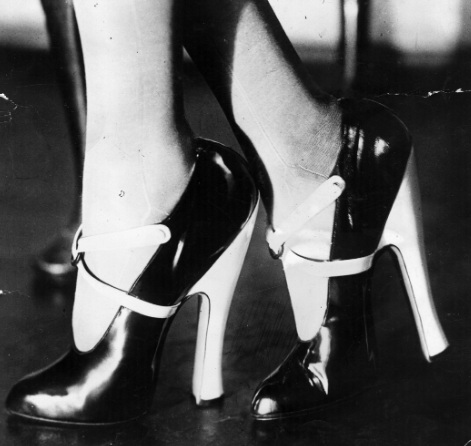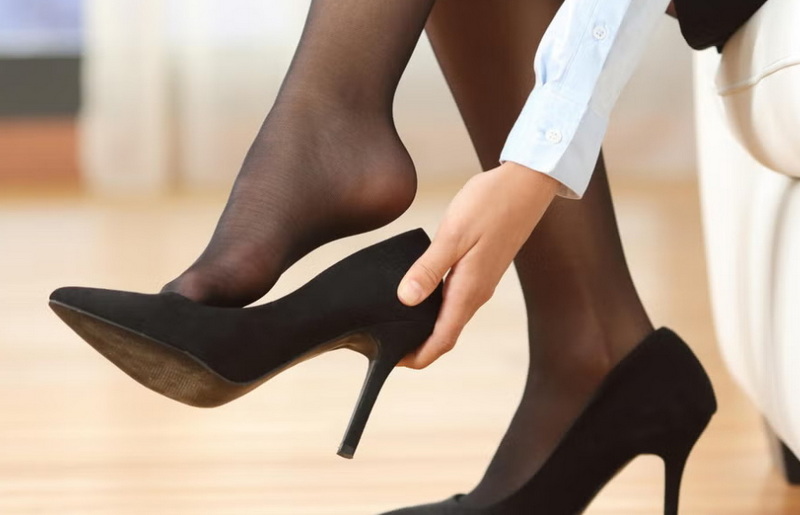Content Menu
● The Ancient Origins of Elevated Footwear
● The Functional Beginnings in Persia
● The Transition to European Fashion
● Catherine de Medici: The Catalyst for Women's High Heels
● The Evolution of Women's High Heels
● The Industrial Revolution and Mass Production
● The 20th Century: High Heels as a Symbol of Femininity
● Technological Advancements in High Heel Design
● High Heels in Contemporary Fashion
● The Cultural Significance of High Heels
● The Future of High Heels
● Choosing the Right High Heels
● The Impact of High Heels on Health
● High Heels in Different Cultures
● Conclusion
● FAQ
>> 1. Are high heels bad for your health?
>> 2. What is the ideal heel height for everyday wear?
>> 3. How can I make high heels more comfortable?
>> 4. Can men wear high heels?
>> 5. How have high heels impacted women's rights and feminism?
● Citations:
High heels have become an iconic symbol of femininity and fashion, but their origins and evolution tell a fascinating story that spans centuries and cultures. From ancient Egypt to modern runways, the journey of high heels is as intriguing as it is complex. Let's delve into the history of high heels and explore who invented them for women.

The Ancient Origins of Elevated Footwear
The concept of elevated footwear can be traced back to ancient civilizations. In Egypt, as early as 3500 BCE, both men and women wore a type of platform sandal[3]. These early forms of elevated shoes were not specifically designed for women but were worn by both genders, often as a symbol of status.
The Functional Beginnings in Persia
The true precursor to modern high heels emerged in 10th century Persia. Persian cavalry soldiers wore heeled boots to help secure their feet in stirrups while riding horses[1]. This practical innovation allowed for better stability and control when shooting arrows on horseback.
The Transition to European Fashion
High heels made their way to Europe in the 16th century, initially as a fashion statement for men. Wealthy and noble men, including kings, wore heels to appear taller and more powerful[1].
Catherine de Medici: The Catalyst for Women's High Heels
While it's challenging to pinpoint a single inventor of high heels for women, Catherine de Medici is often credited with popularizing them among women in the Western world. In the mid-1500s, Catherine, who was of short stature, wore heels to appear taller at her wedding to the Duke of Orleans (later King Henry II of France)[1].
Catherine's influence as a trendsetter cannot be overstated. Her adoption of high heels for women marked a significant shift in fashion trends and began the association of high heels with femininity and elegance.
The Evolution of Women's High Heels
Following Catherine de Medici's lead, high heels gradually became more popular among women in European courts. By the 17th and 18th centuries, high heels had become a staple of women's fashion, particularly among the nobility and upper classes[2].
The Industrial Revolution and Mass Production
The Industrial Revolution in the 19th century brought about significant changes in shoe production. With the advent of mass manufacturing techniques, high heels became more accessible to a broader range of women[2].
The 20th Century: High Heels as a Symbol of Femininity
The 20th century saw high heels firmly established as a symbol of femininity and fashion. Hollywood stars like Marilyn Monroe and Audrey Hepburn popularized stiletto heels in the 1950s, cementing their status as a glamorous and desirable accessory[2].

Technological Advancements in High Heel Design
The post-World War II era brought significant technological advancements in high heel design. The use of steel allowed for the creation of thinner, more stable heels, giving rise to the modern stiletto[1]. This innovation opened up new possibilities in heel design and height.
High Heels in Contemporary Fashion
Today, high heels come in a vast array of styles, heights, and designs. From classic pumps to avant-garde architectural heels, the variety is endless. Designers continually push the boundaries of what's possible in heel design, creating everything from clear plastic heels to sculptural art pieces[7].
The Cultural Significance of High Heels
High heels have become more than just a fashion accessory; they're a cultural icon. They've been associated with femininity, power, sexuality, and professionalism. However, they've also been the subject of debate regarding health concerns and gender expectations[8].
The Future of High Heels
As we look to the future, high heels continue to evolve. There's a growing emphasis on comfort and sustainability in heel design. Many brands are exploring eco-friendly materials and ergonomic designs that maintain style while prioritizing wearers' comfort[7].
Choosing the Right High Heels
When it comes to selecting high heels, there are several factors to consider. Comfort should be a top priority, along with considering the occasion, heel height, and overall style. It's essential to find a balance between fashion and function[7].
The Impact of High Heels on Health
While high heels can enhance one's appearance and confidence, it's important to be aware of potential health impacts. Prolonged wear of high heels can affect posture, increase the risk of certain foot conditions, and even impact the back and knees[8].
High Heels in Different Cultures
The perception and use of high heels vary across different cultures. In some societies, they're seen as a symbol of empowerment, while in others, they're viewed more critically. Understanding these cultural nuances can provide insight into the global impact of high heels[3].
Conclusion
The invention and evolution of high heels for women is a complex narrative that spans centuries and cultures. While we can't attribute their invention to a single person, figures like Catherine de Medici played crucial roles in popularizing them among women. From their practical origins in Persian cavalry to their status as a fashion staple today, high heels have undergone significant transformations.
As we continue to see innovations in design and materials, high heels remain a powerful symbol in fashion and culture. Whether viewed as empowering or controversial, their impact on society is undeniable. As we move forward, the focus seems to be shifting towards creating high heels that balance style, comfort, and sustainability, ensuring their continued relevance in the world of fashion.

FAQ
1. Are high heels bad for your health?
While high heels can enhance appearance, prolonged wear can potentially lead to foot problems, posture issues, and back pain. It's important to wear them in moderation and choose well-fitting, comfortable styles[8].
2. What is the ideal heel height for everyday wear?
For everyday comfort, a heel height of 2-3 inches (5-7.5 cm) is generally recommended. This provides elevation without putting excessive strain on the feet and legs[6].
3. How can I make high heels more comfortable?
To increase comfort, consider using cushioned insoles, breaking in new shoes gradually, and alternating between different heel heights throughout the week. Proper fit is also crucial for comfort[7].
4. Can men wear high heels?
Historically, men were the first to wear high heels. While less common today, there are no rules against men wearing heels, and some designers create high-heeled shoes specifically for men[1].
5. How have high heels impacted women's rights and feminism?
High heels have been both embraced and criticized by feminist movements. Some view them as symbols of empowerment and choice, while others see them as tools of oppression. The debate continues to evolve with changing societal norms[8].
Citations:
[1] https://www.thefactshop.com/fashion-facts/history-of-high-heels/
[2] https://londonrunway.co.uk/the-history-of-high-heels/
[3] https://shoefairyofficial.com/blogs/news/the-history-of-high-heels-10-facts-that-surprise-you
[4] https://unsplash.com/s/photos/woman-high-heels
[5] https://www.youtube.com/watch?v=hJfpeEmtZ7U
[6] https://www.shoezone.com/Womens/Womens-Guide-To-Heels
[7] https://peachflores.com/blogs/pf-stories/10-things-to-remember-before-buying-heels-a-guide-to-finding-the-perfect-pair
[8] https://www.healthy-veins.com/posttype-faq/bad-wear-high-heeled-shoes/
[9] https://en.wikipedia.org/wiki/High_heels
[10] https://www.charleskeith.com/tw-en/guides/heels.html

















